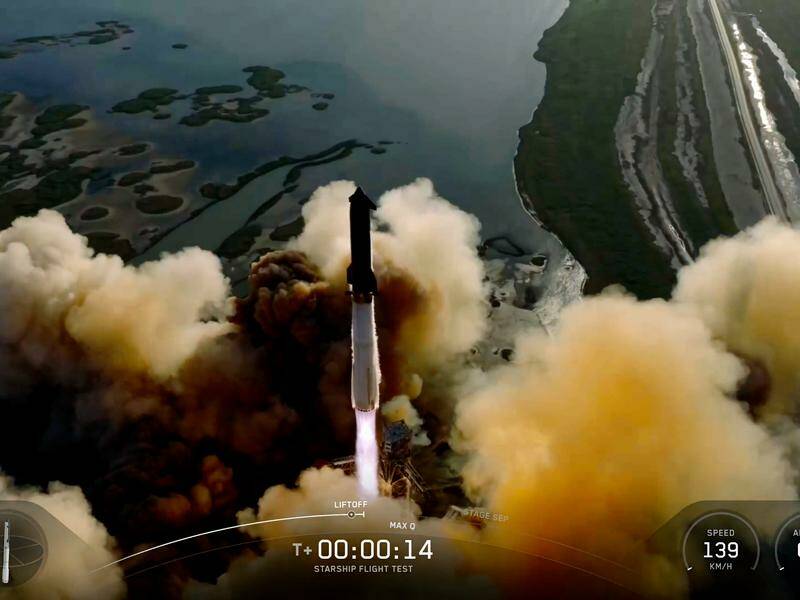
SpaceX successfully completed its 11th test flight of the Starship rocket on Monday night, marking a significant step in its ambitious plans for lunar and Martian exploration. The launch took place from the company’s Starbase facility in Texas, with the rocket landing in the Indian Ocean, west of Australia. This mission precedes the upcoming test launches of a new Starship version, which will feature enhancements aimed at supporting long-duration missions.
The Starship rocket, which consists of the upper stage stacked atop the Super Heavy booster, lifted off and delivered the Starship stage into space. Following this, the Super Heavy booster returned to Earth, successfully achieving a soft water landing in the Gulf of Mexico approximately seven minutes post-launch. This landing was part of a critical test of a new engine configuration. Unfortunately, the booster self-destructed shortly after landing.
Similar to its previous flight in August 2023, this mission deployed a batch of mock Starlink satellites. During its return to Earth, the rocket re-lit its engines and tested new heat shield tiles, all while experiencing the intense conditions of re-entry.
Sean Duffy, the acting NASA Administrator, commented on the mission via X, referring to it as “another major step toward landing Americans on the Moon’s south pole.” SpaceX is now preparing for future tests that will include a more advanced prototype of the Starship. This upgraded version will incorporate essential features for extended missions, such as docking adapters and hardware for orbital refueling.
At a conference in Paris last month, Gwynne Shotwell, President of SpaceX, emphasized the importance of this prototype, stating, “That is really the vehicle that could take humans to the Moon and Mars.” She projected that this iteration of Starship could fly by the end of 2023 or early 2024.
Elon Musk, CEO of SpaceX, has indicated that a refueling mission involving two Starships is anticipated for next year. This refueling process is crucial before the rocket can transport humans to the lunar surface, with plans for a crewed landing targeted for 2027. SpaceX’s approach involves multiple Starship tankers filling a single Starship with enough fuel to support a moon landing.
The company secured a contract valued at over $3 billion under NASA’s Artemis program in 2021, which aims to return humans to the moon for the first time since 1972. SpaceX’s involvement positions it at the forefront of the ongoing competition for lunar exploration between the United States and China, the latter of which aspires to achieve a crewed landing by 2030.
Despite these advancements, a panel of NASA safety advisers raised concerns last month regarding the slow progress in developing components for the lunar lander design, warning that such delays could significantly impede the U.S. moon mission timeline.
The successful completion of this test flight not only highlights SpaceX’s progress but also underlines the growing importance of private companies in the pursuit of space exploration objectives. As SpaceX continues its ambitious plans, the world watches closely to see how these developments will shape the future of humanity’s presence beyond Earth.






